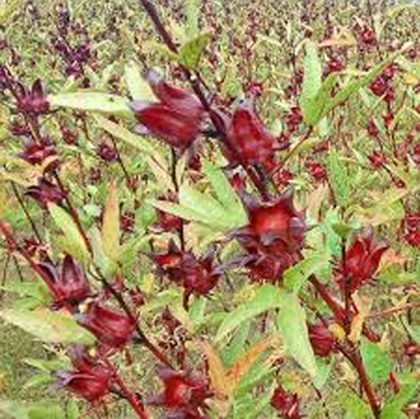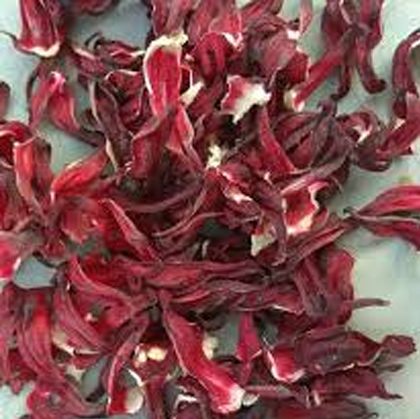Hibiscus syrup has been known in traditional medicine since ancient times because of its many benefits that have proven successful on many medical conditions, such as in the treatment of malaria, cough and pneumonia, and it has an effect that leads to lowering blood pressure.
Hibiscus sabdariffia

Plant ( H. sabdariffia)

Flowers (H. sabdariffia)
Hibiscus sabdariffia
Malvaceae
(Eng.): Roselle; (Arabic): Kardady.
Grown better in light (sandy), medium (loamy) and heavy (clay) soils and prefers well-drained soil. Suitable pH: mildly acid, neutral and basic (mildly alkaline) soils. It cannot grow in the shade. It prefers moist soil.
Leave and flowers
It is an annual herb that grows up to 6 feet or more, stems are glabrous; lower leaves are ovate with the upper leaves being 3-5 palmately lobed. The flowers are axillary or in terminal racemes, the petals are white with a reddish center at the base of the staminal column, the calyx enlarges at maturity and the fruit is fleshy and bright red.
Sepal’s content Malic acid, glycosides (Hibicin), also content tannins and fatty acids.
- Maintaining a healthy liver
- Rich source of Vitamin C
- A source of many powerful antioxidants
- Reduce cholesterol level
- Prevention of bacterial infections
- It is used to treat malaria, cough and pneumonia
- Lowering blood pressure
A recent survey (2015) in the Journal of Hypertension, reports a typical reduction in blood pressure of about 7.5/3.5 units (systolic/diastolic)
Specification Data Sheet:
This Sudanese standard is formulated by the technical committee No.4 formed according to the administrative decree of the SSM0/1/A/I dated 18/8/01. It applies to Roselle.
On formulating this standard the committee has referred to international publications and works of Sudanese researchers on the subject.


